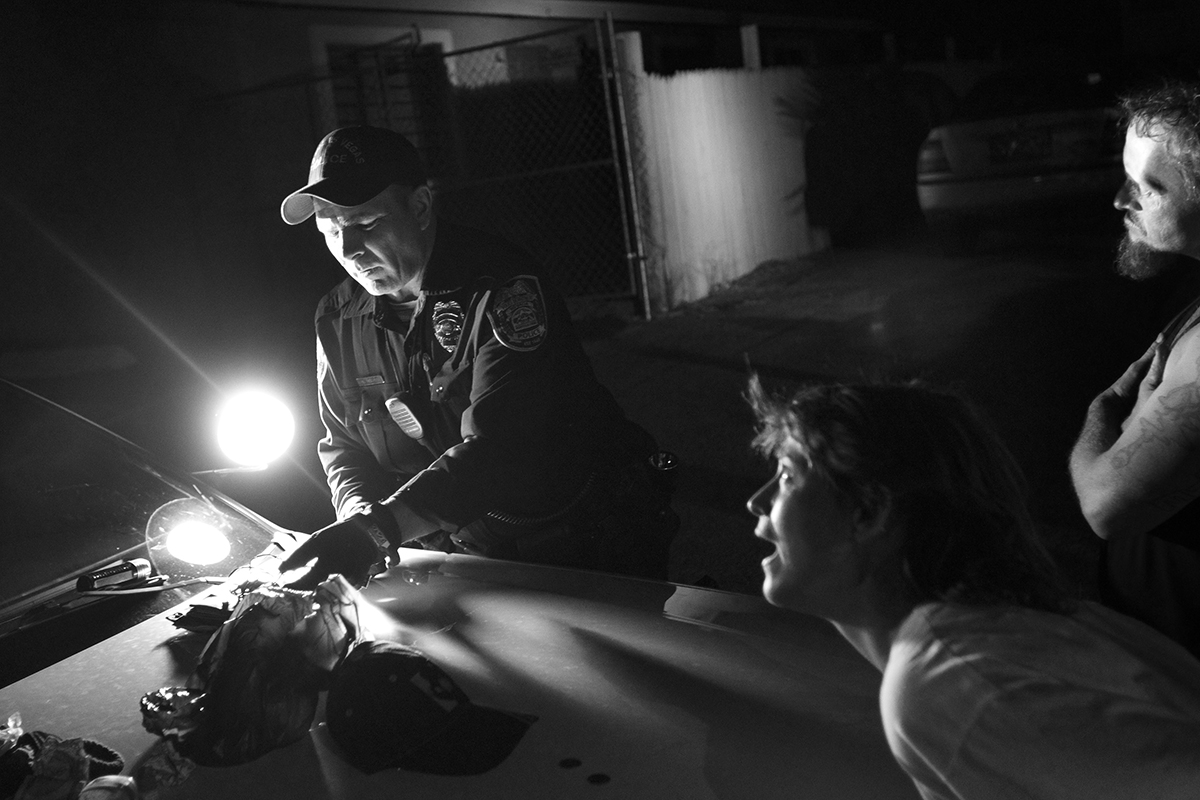North Las Vegas police have better system for reviewing officer actions
When North Las Vegas police shot and killed Fernando Giovanni Sauceda just nine minutes into 2011, it was the first police shooting for the department in two years.
There have been 29, including 11 deaths, since 1990 — but even after adjusting for population and violent crime rates, North Las Vegas officers use their guns much less often than do their colleagues in the Metropolitan Police Department.
And since 2001, North Las Vegas police have shot less often than Henderson police, who patrol a slightly bigger but more affluent city with lower crime rates.
A Las Vegas Review-Journal computer-assisted analysis of all police shootings since 1990 shows that, compared with their counterparts, North Las Vegas police:
■ Shoot fewer people who are unarmed or "armed” only with a vehicle than Henderson and Las Vegas police.
■ Shoot fewer people who are considered suicidal or mentally ill than Henderson and Las Vegas police.
■ Engage in fewer chases that end with a police shooting than Las Vegas police.
■ Shoot less often at people in vehicles than Henderson and Las Vegas police.
Why does North Las Vegas have comparatively fewer shootings?
"To sit there and say, 'What have we done differently than anybody else in the United States?' I don't know that we have,” said Chief Joseph Chronister, who assumed the post in January.
One clear-cut difference between the 280-officer city force and its larger neighbor is that North Las Vegas has a more thorough system for reviewing the actions of its officers.
When an officer in North Las Vegas uses any level of force — from a punch to gunshots — the officer must complete a thorough incident report. The officer's direct supervisor critiques the report and breaks down the incident to determine whether the officer should have done anything differently.
Both reports are scrutinized in several layers of reviews, culminating with a decision by a board of officers that determines if force was justified; whether the reporting and analysis was thorough enough; and if the department should change policies or training to fix any problems. At any step a supervisor can ask internal affairs to investigate.
By comparison, the Las Vegas department traditionally hasn't reviewed incidents with an eye on changing policy or training and has fewer layers of review.
North Las Vegas is also far more willing to recommend criminal charges for officers who abuse their authority.
A 2008 case illustrates the effectiveness of the North Las Vegas system, said a spokesman, Sgt. Tim Bedwell.
When officers Mark Alan Miles and James F. Balelo filed reports on a fight with a drunk in a casino's holding cell, the supervisor checked surveillance video and saw that Miles had slapped the man and baited him to fight. Miles was charged with oppression under color of office, and both officers were charged with filing false police reports. While acquitted by a jury, they're no longer with the department.
By comparison, in 2001 Las Vegas police officer David D. Miller was shown on surveillance video punching a handcuffed man and breaking his neck in the backroom of a casino. The department later paid a $250,000 settlement. The officer's punishment: A 10-hour suspension and more training. He's still with the department.
CASES REVEAL BREAKDOWNS
North Las Vegas has not been free of problem shootings, however.
In 2005 officer George De Santiago arrived at a home in response to a call about a man with a gun. De Santiago peered around the side of the house and saw a man with a rifle or shotgun walking toward him. Apparently without announcing himself, De Santiago fired at — and missed — another cop.
Chronister called the case a breakdown in communication that prompted disciplinary action.
A case two years later revealed a breakdown in the investigative process.
Detective Michael Yarter, on his lunch break, stumbled onto an armed robbery in a cellphone store. The plainclothes detective ran out and started to call 911 when the suspect, Jevon Oglesby, 19, drove past him. Yarter said he fired at the car when Oglesby pointed a gun at him — a valid response to a threat.
But Yarter kept shooting — 14 shots in all — as the vehicle drove away.
When Yarter was interviewed by detectives, his police union lawyer was at his side, as is customary. After questioning Yarter, Detective Mark Suranowitz turned the interview over to the lawyer, Christopher Cannon, asking him whether he had any questions for his own client.
The lawyer took the opportunity to lead his client into explaining his actions in a way that justified shooting after the car and driver were no longer a threat.
"He asked Detective Yarter that based on the fact that the suspect committed the robbery at the Cingular store, based on the fact that he pointed the firearm as he was leaving the business, was it his belief that if the suspect had escaped when he was driving southbound on Clayton (Street) that he would pose a threat to the general public or maybe even himself if the suspect came back at him?” the police report states.
"Uh, yeah. Definitely,” Yarter responded.
He was not disciplined.
Chronister said allowing the union lawyer to ask such a question was "inappropriate,” and said he would discuss it with detectives.
"I feel fairly confident that those types of things are not occurring here,” he said.
Sauceda's death in January came after police responded to his home to deal with celebratory gunfire. Police said Sauceda, 32, a father of five, pointed a gun at officer Jeffrey Pollard, who brushed it aside and tried to disarm him.
During the struggle, the officer fired several times, killing Sauceda. Pollard wasn't disciplined, Bedwell said. The case is pending review by the Clark County district attorney and a coroner's inquest.
























